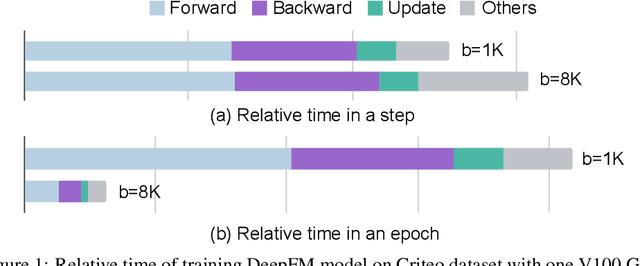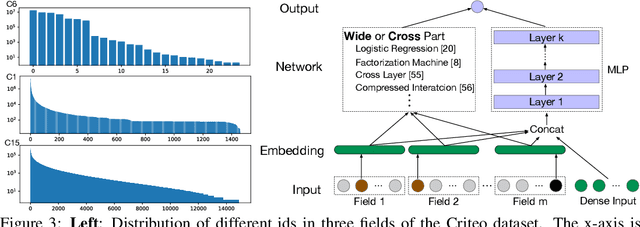Chenguang Xi
BFS-Prover: Scalable Best-First Tree Search for LLM-based Automatic Theorem Proving
Feb 05, 2025Abstract:Recent advancements in large language models (LLMs) have spurred growing interest in automatic theorem proving using Lean4, where effective tree search methods are crucial for navigating proof search spaces. While the existing approaches primarily rely on value functions and Monte Carlo Tree Search (MCTS), the potential of simpler methods like Best-First Search (BFS) remains underexplored. This paper investigates whether BFS can achieve competitive performance in large-scale theorem proving tasks. We present \texttt{BFS-Prover}, a scalable expert iteration framework, featuring three key innovations. First, we implement strategic data filtering at each expert iteration round, excluding problems solvable via beam search node expansion to focus on harder cases. Second, we improve the sample efficiency of BFS through Direct Preference Optimization (DPO) applied to state-tactic pairs automatically annotated with compiler error feedback, refining the LLM's policy to prioritize productive expansions. Third, we employ length normalization in BFS to encourage exploration of deeper proof paths. \texttt{BFS-Prover} achieves a score of $71.31$ on the MiniF2F test set and therefore challenges the perceived necessity of complex tree search methods, demonstrating that BFS can achieve competitive performance when properly scaled.
Balancing Enhancement, Harmlessness, and General Capabilities: Enhancing Conversational LLMs with Direct RLHF
Mar 04, 2024



Abstract:In recent advancements in Conversational Large Language Models (LLMs), a concerning trend has emerged, showing that many new base LLMs experience a knowledge reduction in their foundational capabilities following Supervised Fine-Tuning (SFT). This process often leads to issues such as forgetting or a decrease in the base model's abilities. Moreover, fine-tuned models struggle to align with user preferences, inadvertently increasing the generation of toxic outputs when specifically prompted. To overcome these challenges, we adopted an innovative approach by completely bypassing SFT and directly implementing Harmless Reinforcement Learning from Human Feedback (RLHF). Our method not only preserves the base model's general capabilities but also significantly enhances its conversational abilities, while notably reducing the generation of toxic outputs. Our approach holds significant implications for fields that demand a nuanced understanding and generation of responses, such as customer service. We applied this methodology to Mistral, the most popular base model, thereby creating Mistral-Plus. Our validation across 11 general tasks demonstrates that Mistral-Plus outperforms similarly sized open-source base models and their corresponding instruct versions. Importantly, the conversational abilities of Mistral-Plus were significantly improved, indicating a substantial advancement over traditional SFT models in both safety and user preference alignment.
ICE-GRT: Instruction Context Enhancement by Generative Reinforcement based Transformers
Jan 04, 2024Abstract:The emergence of Large Language Models (LLMs) such as ChatGPT and LLaMA encounter limitations in domain-specific tasks, with these models often lacking depth and accuracy in specialized areas, and exhibiting a decrease in general capabilities when fine-tuned, particularly analysis ability in small sized models. To address these gaps, we introduce ICE-GRT, utilizing Reinforcement Learning from Human Feedback (RLHF) grounded in Proximal Policy Optimization (PPO), demonstrating remarkable ability in in-domain scenarios without compromising general task performance. Our exploration of ICE-GRT highlights its understanding and reasoning ability to not only generate robust answers but also to provide detailed analyses of the reasons behind the answer. This capability marks a significant progression beyond the scope of Supervised Fine-Tuning models. The success of ICE-GRT is dependent on several crucial factors, including Appropriate Data, Reward Size Scaling, KL-Control, Advantage Normalization, etc. The ICE-GRT model exhibits state-of-the-art performance in domain-specific tasks and across 12 general Language tasks against equivalent size and even larger size LLMs, highlighting the effectiveness of our approach. We provide a comprehensive analysis of the ICE-GRT, underscoring the significant advancements it brings to the field of LLM.
GPT-Fathom: Benchmarking Large Language Models to Decipher the Evolutionary Path towards GPT-4 and Beyond
Oct 10, 2023Abstract:With the rapid advancement of large language models (LLMs), there is a pressing need for a comprehensive evaluation suite to assess their capabilities and limitations. Existing LLM leaderboards often reference scores reported in other papers without consistent settings and prompts, which may inadvertently encourage cherry-picking favored settings and prompts for better results. In this work, we introduce GPT-Fathom, an open-source and reproducible LLM evaluation suite built on top of OpenAI Evals. We systematically evaluate 10+ leading LLMs as well as OpenAI's legacy models on 20+ curated benchmarks across 7 capability categories, all under aligned settings. Our retrospective study on OpenAI's earlier models offers valuable insights into the evolutionary path from GPT-3 to GPT-4. Currently, the community is eager to know how GPT-3 progressively improves to GPT-4, including technical details like whether adding code data improves LLM's reasoning capability, which aspects of LLM capability can be improved by SFT and RLHF, how much is the alignment tax, etc. Our analysis sheds light on many of these questions, aiming to improve the transparency of advanced LLMs.
CowClip: Reducing CTR Prediction Model Training Time from 12 hours to 10 minutes on 1 GPU
Apr 22, 2022



Abstract:The click-through rate (CTR) prediction task is to predict whether a user will click on the recommended item. As mind-boggling amounts of data are produced online daily, accelerating CTR prediction model training is critical to ensuring an up-to-date model and reducing the training cost. One approach to increase the training speed is to apply large batch training. However, as shown in computer vision and natural language processing tasks, training with a large batch easily suffers from the loss of accuracy. Our experiments show that previous scaling rules fail in the training of CTR prediction neural networks. To tackle this problem, we first theoretically show that different frequencies of ids make it challenging to scale hyperparameters when scaling the batch size. To stabilize the training process in a large batch size setting, we develop the adaptive Column-wise Clipping (CowClip). It enables an easy and effective scaling rule for the embeddings, which keeps the learning rate unchanged and scales the L2 loss. We conduct extensive experiments with four CTR prediction networks on two real-world datasets and successfully scaled 128 times the original batch size without accuracy loss. In particular, for CTR prediction model DeepFM training on the Criteo dataset, our optimization framework enlarges the batch size from 1K to 128K with over 0.1% AUC improvement and reduces training time from 12 hours to 10 minutes on a single V100 GPU. Our code locates at https://github.com/bytedance/LargeBatchCTR.
 Add to Chrome
Add to Chrome Add to Firefox
Add to Firefox Add to Edge
Add to Edge